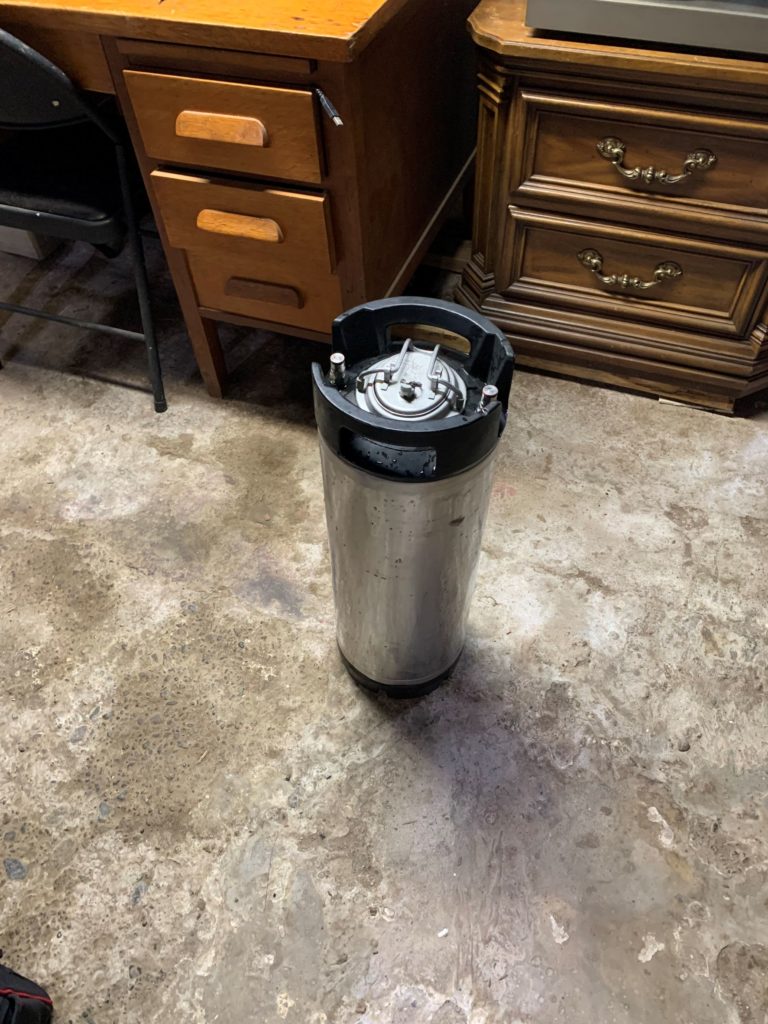My beer is ready for kegging. It has been lagering for four weeks. However, I don’t even know if this system works or leaks for that matter. The last thing I want to do is transfer my time and money into something that is not going to work.
This last weekend, I got my CO2 cylinder filled and I also learned something. Cylinders are pressure tested every five years. A refill is $18 but a pressure test is another $20. My cylinder was last tested in 2017, so of course it was expired. It wasn’t quite the deal that I was hoping for, since the homebrewing store charges $36 for a cylinder but hopefully this will be the last time in the next five years that I have to recertify.
I disassembled everything and checked the cleanliness, at least that was good. I connected the regulator to the cylinder and that was leak free. The Cornelius keg held pressure. I filled it up with water and pushed it through the system. Everything checks out. I have some monkeying to do with the pressure coming out of the regulator but I don’t want to do that until I do it with the beer.

Before I connect the beer, I want to replace the tubing to the tap. There is some residue dried inside. I went to the store to buy replacement tubing, but I didn’t find an exact match. The current tubing is 3/16 inner diameter (ID) and 7/16 outer diameter (OD). This is pretty thick stuff. So, I thought I would order it.

Looking at the replacement connections, they are 1/4″ hose barbs. This means that the nipple sticking out is sized for 1/4″ ID tubing, not 3/16″. This is doable, generally you can force a smaller tube onto a larger connection, but why? So, I am going to purchase the proper sized tubing which will make maintenance much easier in the future.

Looks like the original tubing is rated at 75psi. I am going to go with the larger diameter tubing because the regulator is pushing out 12 psi in this case. Pressure is a measure of a given mass of material in a set volume. It is the regulators job to allow a certain amount of gas to pass until the set pressure is reached. If I were to have multiple kegs attached, it would take more mass (of gas) to pressure two kegs, but it would still regulate at 12psi. It just might take more time.
End Your Programming Routine: Looks like things are perking up for the Cinco de Mayo inauguration. Let’s hope that the beer stands up to the hype and effort. I tasted it this weekend and I was not as happy as the first tasting. I do feel like it was too cold because it tasted like flat beer. So, I will be messing with temperature and CO2 as well as getting the menu ready.

Recent Comments